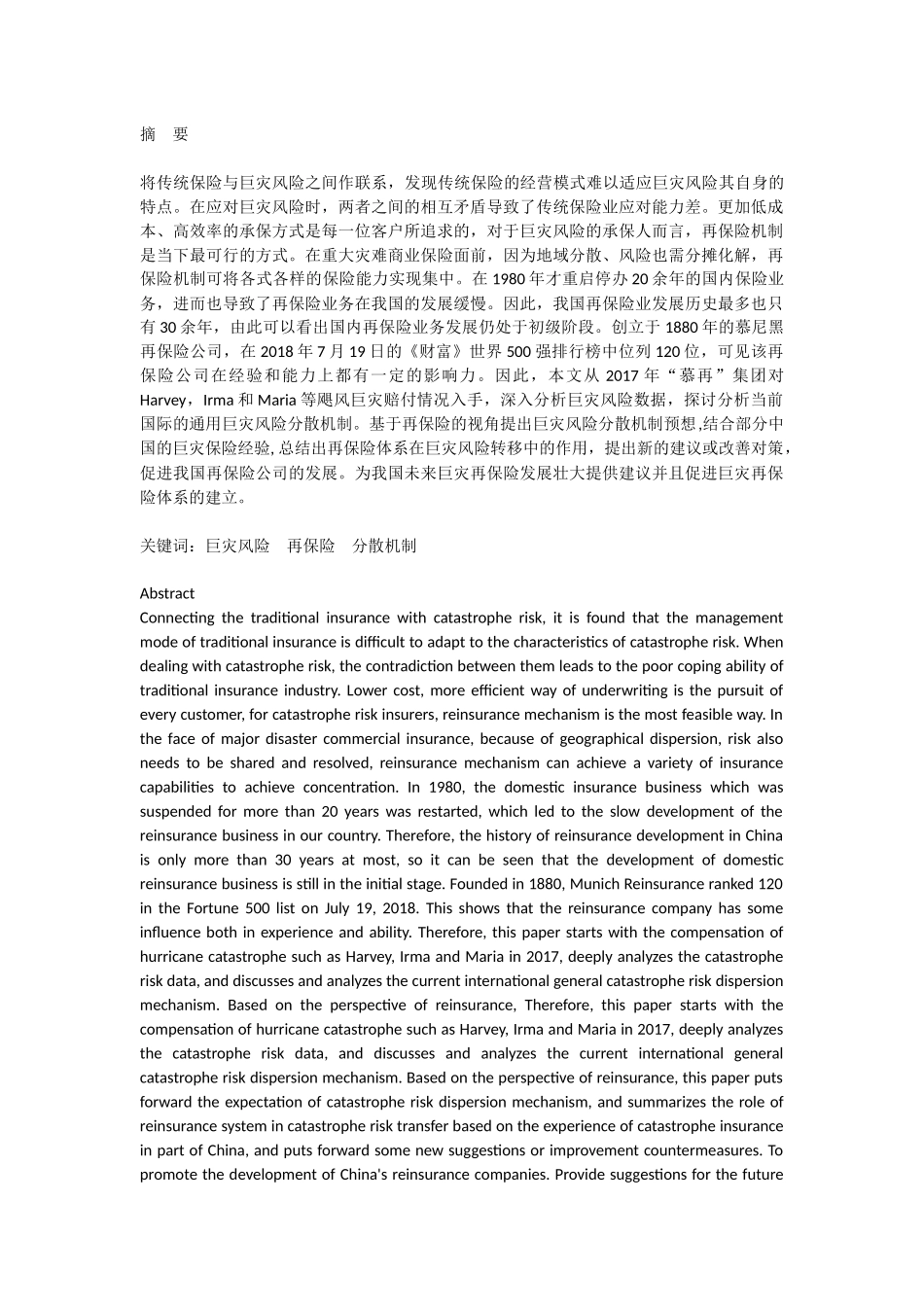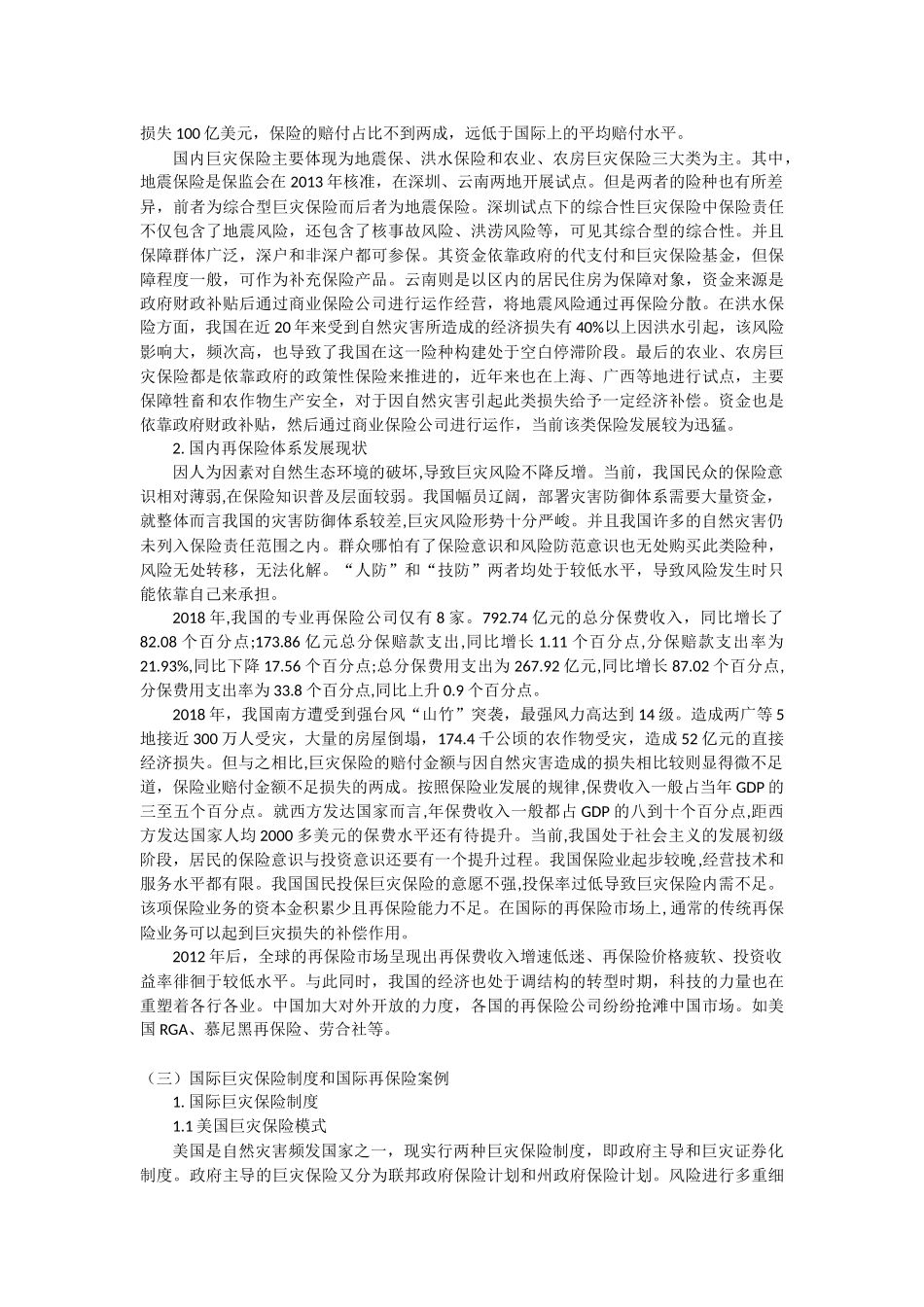摘 要将传统保险与巨灾风险之间作联系,发现传统保险的经营模式难以适应巨灾风险其自身的特点。在应对巨灾风险时,两者之间的相互矛盾导致了传统保险业应对能力差。更加低成本、高效率的承保方式是每一位客户所追求的,对于巨灾风险的承保人而言,再保险机制是当下最可行的方式。在重大灾难商业保险面前,因为地域分散、风险也需分摊化解,再保险机制可将各式各样的保险能力实现集中。在 1980 年才重启停办 20 余年的国内保险业务,进而也导致了再保险业务在我国的发展缓慢。因此,我国再保险业发展历史最多也只有 30 余年,由此可以看出国内再保险业务发展仍处于初级阶段。创立于 1880 年的慕尼黑再保险公司,在 2018 年 7 月 19 日的《财富》世界 500 强排行榜中位列 120 位,可见该再保险公司在经验和能力上都有一定的影响力。因此,本文从 2017 年“慕再”集团对Harvey,Irma 和 Maria 等飓风巨灾赔付情况入手,深入分析巨灾风险数据,探讨分析当前国际的通用巨灾风险分散机制。基于再保险的视角提出巨灾风险分散机制预想,结合部分中国的巨灾保险经验, 总结出再保险体系在巨灾风险转移中的作用,提出新的建议或改善对策,促进我国再保险公司的发展。为我国未来巨灾再保险发展壮大提供建议并且促进巨灾再保险体系的建立。关键词:巨灾风险 再保险 分散机制 AbstractConnecting the traditional insurance with catastrophe risk, it is found that the management mode of traditional insurance is difficult to adapt to the characteristics of catastrophe risk. When dealing with catastrophe risk, the contradiction between them leads to the poor coping ability of traditional insurance industry. Lower cost, more efficient way of underwriting is the pursuit of every customer, for catastrophe risk insurers, reinsurance mechanism is the most feasible way. In the face of major disaster commercial insurance, because of geographical dispersion, risk also needs to be shared and resolved, reinsurance mechanism can achieve a variety of insurance capabilities to achieve concentration. In 1980, the domestic insurance business which was suspended f...


